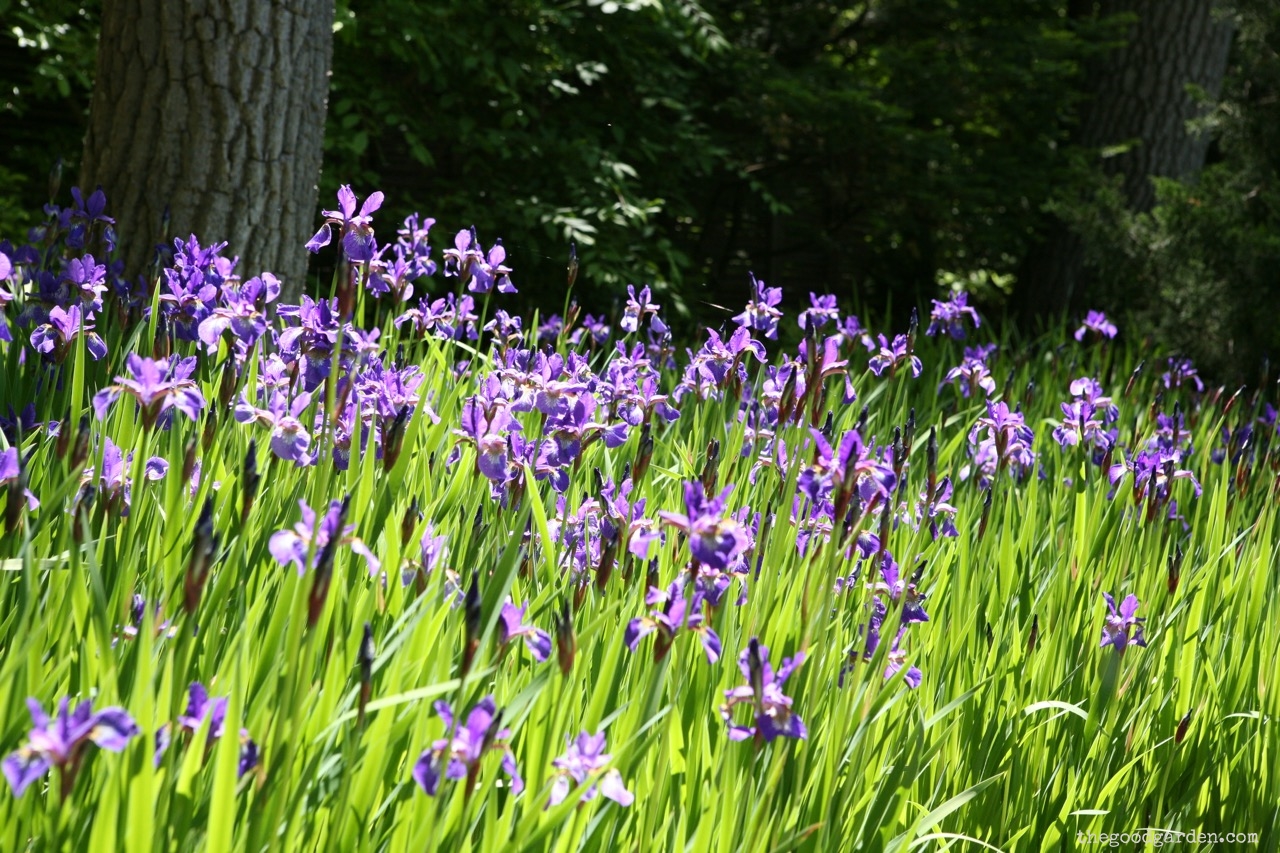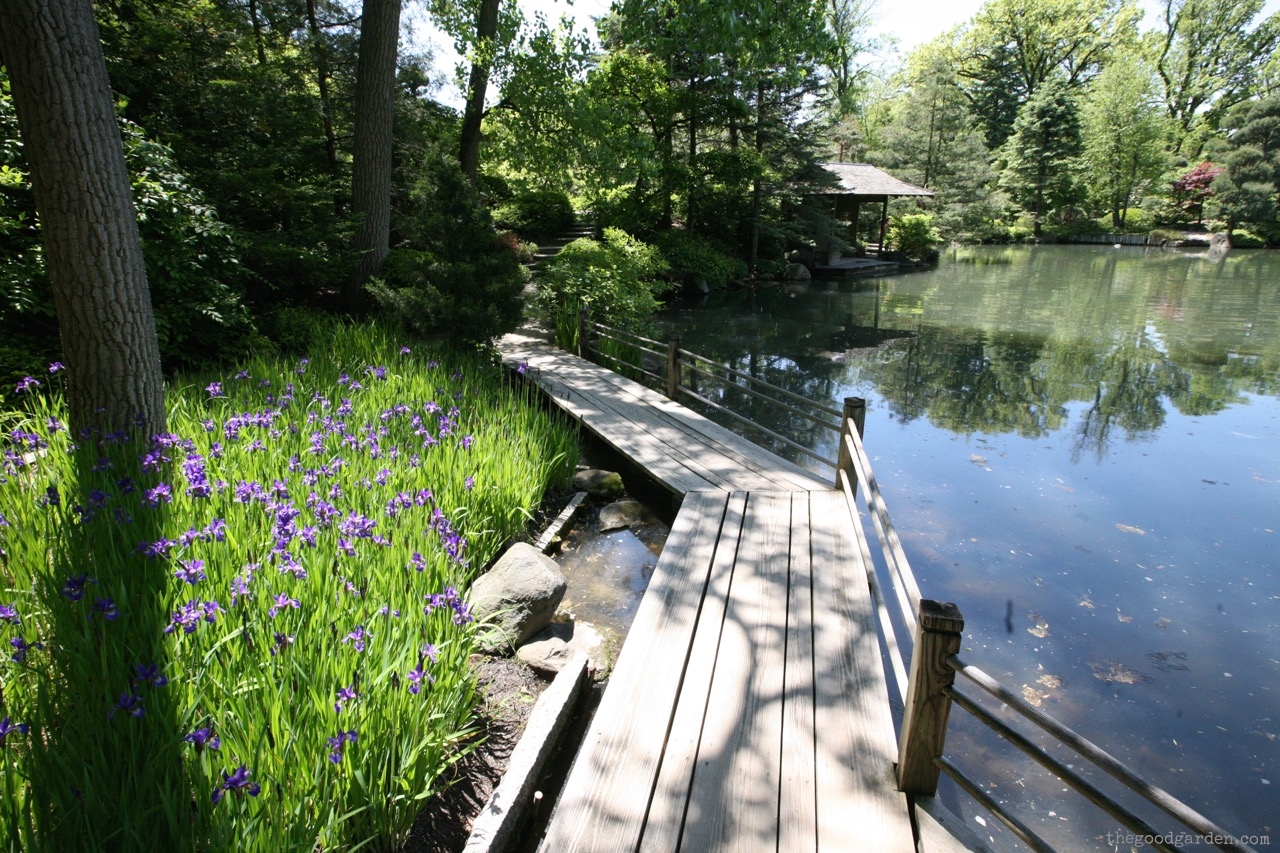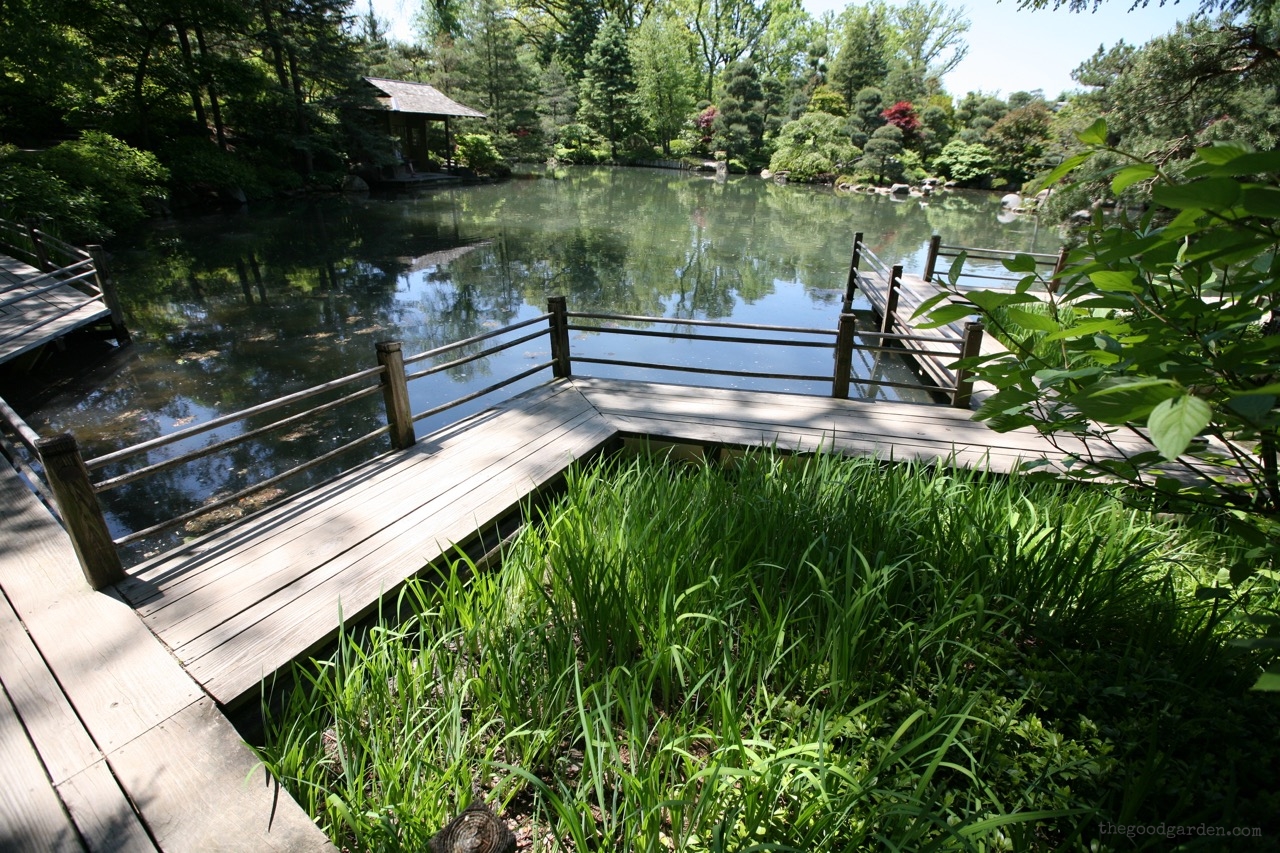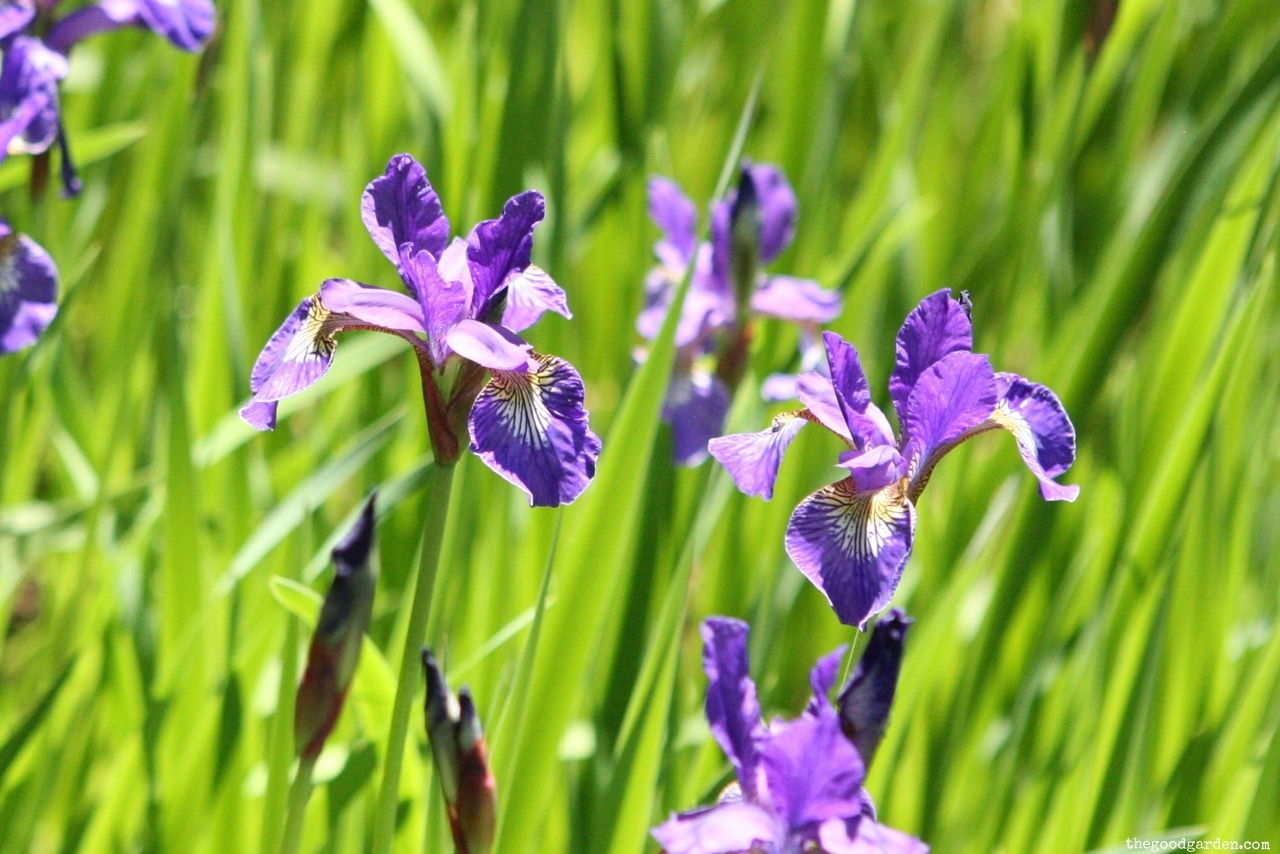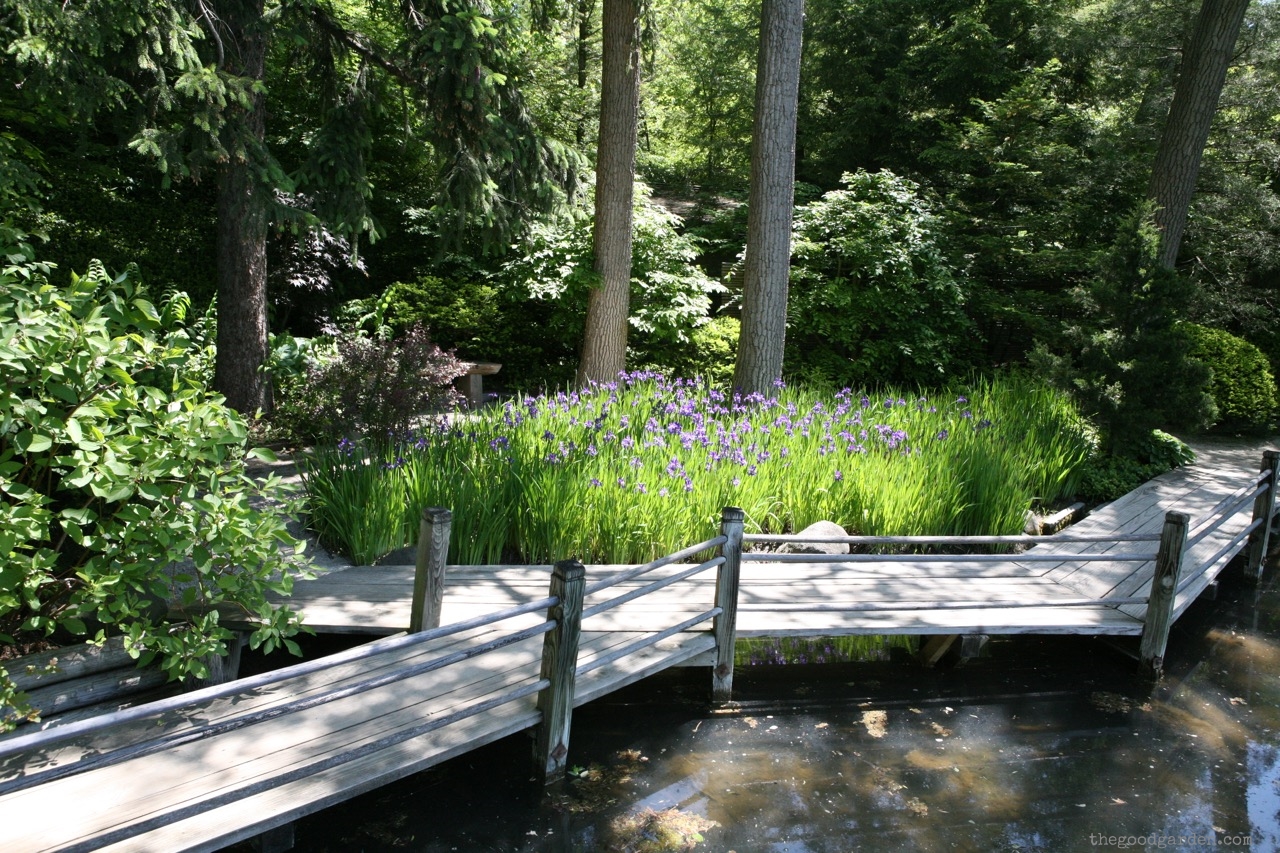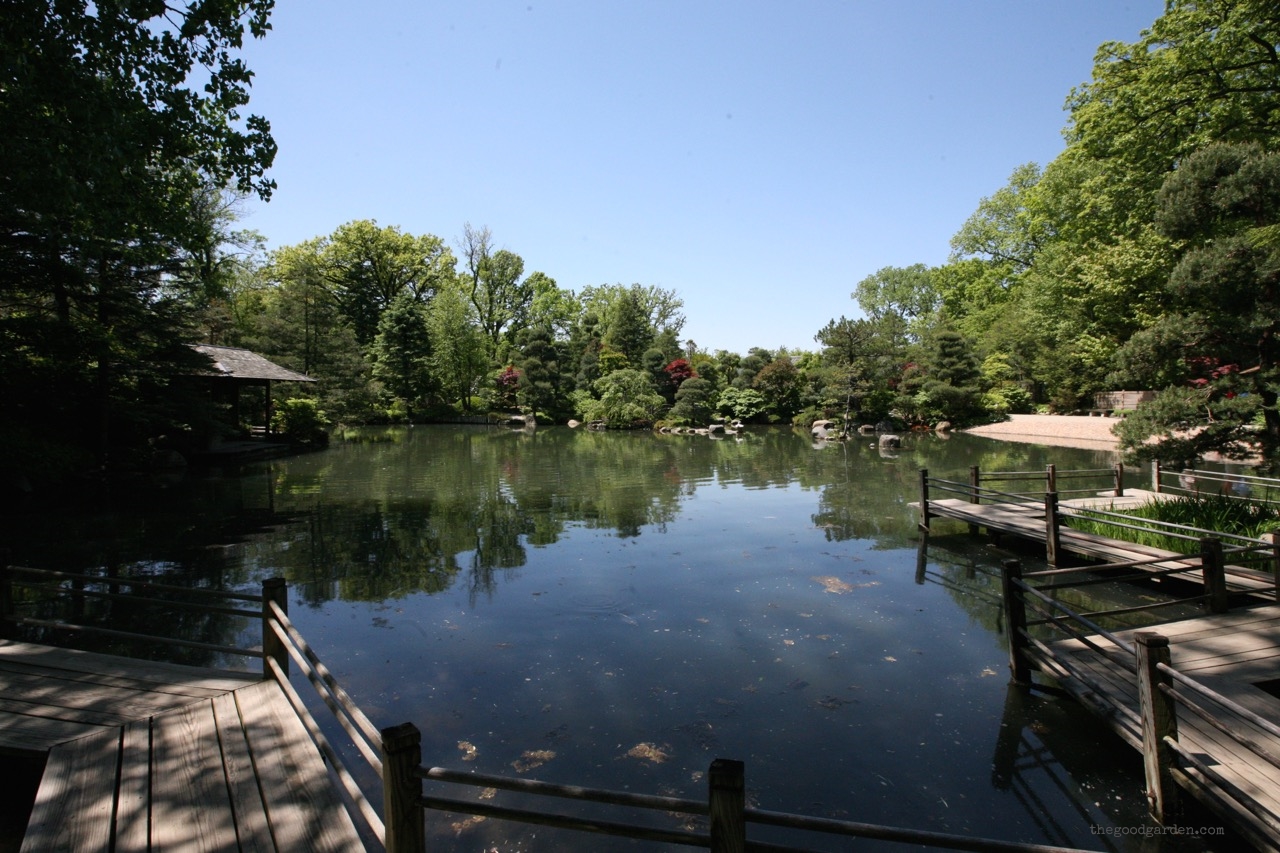I am often struck by the connection between gardens and art. Nature and gardens have always inspired poets and painters. And works of art, in turn, inspire designers to re-create scenes in 3 dimensions.
The zig-zag bridge and irises above from the Anderson Japanese Gardens in Rockford, Illinois are a good example. This garden section was inspired by the 900 CE poem called The Tales of Ise.
The poem explores the connection between nature and human relationships, love and loss. At one point, its main character feels that his life has lost its meaning. In order to gain perspective, he sets off on a journey through the countryside. He happens upon a place of great beauty: the mouth of a river that requires several bridges to cross, a place called Eight Bridges. Here, on the shores of this river, mounds of deep purple irises are in full bloom. In this place he begins to recognize his grief for the lover he left behind.
Irises at Yatsuhashi by Ogata Kōrin (Japanese, 1658–1716) Source: Metropolitan Museum of Art. Purchase, Louisa Eldridge McBurney Gift, 1953
This poem, The Tales of Ise has inspired artists as well as gardeners. One examples is Ogata Korin’s 1710 folding screen, now part of the The Metropolitan Museum of Art collection.
The power of this section of the Anderson Japanese Gardens lies in its ability to slow us down both physically and mentally. A number of elements are critical. The path changes from crushed stone to a wooden platform. A slight tilt toward the river shifts one’s balance enough to require immediate concentration. The low horizontal wooden fencing changes the scale and adds an interesting detail. From the bridge the view to the pond opens up to reveal a viewing pavilion, an island, and a distant shore. And there is an amazing field of purple Siberian irises backed by dark naturalistic woodland. With the sunlight illuminating them from behind they look like purple lanterns swaying in the wind. The garden is beautiful and the overall effect clears the mind, creates space to reflect, to restore.
This effect is actually the intention of Anderson Japanese Gardens: to “inspire the mind and energize the soul.” An extended trip to Japan as a young adult left patron John Anderson impressed by the power of Japanese gardens to make us feel better. A business trip in the 1970’s allowed him to visit the Portland Japanese Garden in Oregon which reconnected him with the beauty and peacefulness of this garden style. These events motivated him to turn his wooded, swampy Illinois backyard into a Japanese-inspired garden in 1978. To do this he turned to award-winning garden designer Hoichi Karisu, famous for creating restorative gardens. Over time the garden has expanded to over 12 acres.
Today, Anderson Japanese Gardens aims to offer visitors “a place of peace and tranquility where they will find healing, renewal, inspiration, and a re-energized soul.” What a refreshing vision in today’s always connected and hectic world.
Located outside of Chicago, Anderson Japanese Gardens has something for everyone: music, lectures, art, and a new farm-to-table restaurant. Above all it is about exploring the garden and enjoying the many spots to sit, reflect, and relax. You won’t be disappointed!

